A Victory for Lions. The Cougar Fund’s long serving Directors help defeat Wyoming’s notorious cougar bill
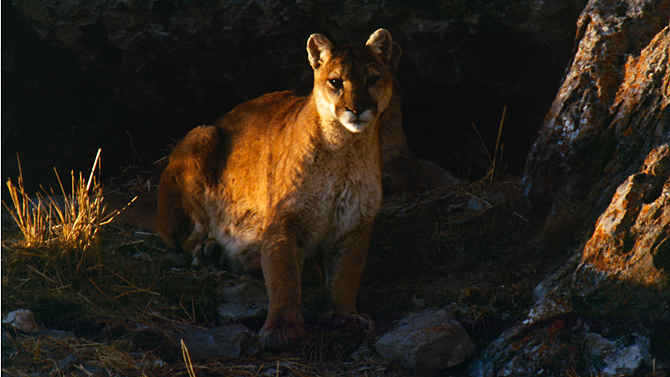
-
- Tom Mangelsen’s original image of Spirit, the inspiration for The Cougar Fund 1999.
Spirit and her cubs taught us to be passionate and compassionate about protecting cougars, and to tell their story of mystery and vulnerability, especially mothers and their kittens.
In Cheyenne Wyoming, on a chilly late Saturday afternoon, January 26th 2025, one of the most devastating wildlife bills ever to reach the floor of the State Legislature was introduced.
HB0286, if passed, would have heralded a new standard of legislative overreach in a state rich with wildlands and the wildlife that lives there.
The Cougar Fund Board of Directors, staff, and fellow professionals leapt into action to start a campaign to bring awareness to this grave injustice.
HB0286 proposed the following changes and threatened the overall survival of mountain lions in Wyoming.
It all came from the unsubstantiated notion that it would bring back mule deer.
If passed, there would be no hunting zones and geographic boundaries for cougars.
- It would remove statewide and local mortality limits, and would allow unrestricted killing of cougars.
- It would authorize cougar trapping and snaring, practices that are neither selective nor humane.
- It was slated to cut off an existing revenue stream from the Wyoming Game & Fish Department and pass on the ability to freely hunt cougars with other game licenses, such as antelope, deer, or elk.
- A specific and regulated cougar license would no longer be needed!
Experts used targeted social media outreach to help spread information: the calm and experienced presence in the Capitol of Director Corey Rutledge provided the human factor in talking to politicians; while our working group partners provided insight and support.
Press releases were sent out and Corey was the absolute showstopper point of contact for interviews and follow up.
After HB0286 was introduced to the floor of the House of Representatives, everyone had to wait on pins and needles for what might come next. A long week went by, we kept our supporters and those Wyoming residents who were anxious to talk to their representatives in the loop with every day that passed.
Finally, the bill was assigned to a committee, but would it be heard? would it remain in the chairman’s drawer and time out? or would it be discussed and opposed, or pass and go back to the chamber for a vote? It was hard to tell.
February 4th. 2025: The day came, the Travel, Recreation, and Wildlife Committee hearing was scheduled and commenced.
(February 4th reminded us that it is just ten days short of twenty six years, when on St. Valentine’s Day 1999 the idea for The Cougar Fund was born. A similar awakening to the plight of cougars took place on the National Elk Refuge, just outside the town of Jackson Wyoming. Co-Founders Cara Blessley-Lowe and Thomas D Mangelsen were privileged to see into the life of Spirit and they realized the terrible and unacceptable risk that hunting posed to mothers and kittens. They became passionate advocates for cougars)
Director Cara was already signed up for her ZOOM testimony and Corey was in a front row seat to be the voice of The Cougar Fund in person.

State Capitol. Cheyenne, Wyoming
Rarely do so many diverse stake-holders share one voice either for or against something. This was one of those rare times. Advocates with the same compassionate values as The Cougar Fund spoke out. Hunters, houndsmen, Wyoming Game and Fish Department, and mule deer specific groups testified. The resistance to HB0286 was united. the Chairman was efficient, he kept testimony brief and on point.
HB0286 died for want of a motion to even be considered.
The bill also failed for reasons other than the diversity of opposition. The Cougar Fund believes that HB0286 failed because a story could be told. A Story about the lives, the hardships and the value of lions in the wild, and why they need protection. Stories come so easily to our founders, either in beautifully crafted words or in breathtaking images. Today advocacy has the advantage of being able to communicate rapidly through technology which can mobilize people quickly and effectively. They can respond just as fast. Our hearts are full of thanks that they did.
This is a success story, that many groups are sharing in. Thank you for supporting The Cougar Fund’s efforts. Hard work is always done by more people than you can imagine. Please always remember that we could do none of it without you.

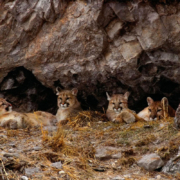 © Thomas D. Mangelsen
© Thomas D. Mangelsen Cara Blessley Lowe
Cara Blessley Lowe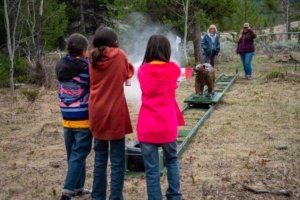
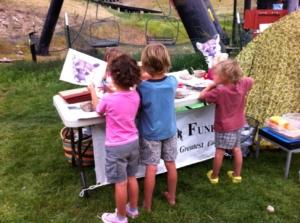


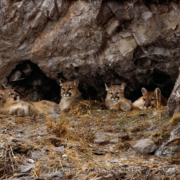 A cougar and her three kittens. Copyright: Thomas D. Mangelsen.
A cougar and her three kittens. Copyright: Thomas D. Mangelsen.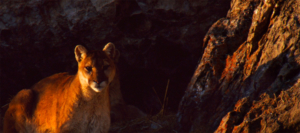
 Wild Nature Media
Wild Nature Media TCF Wild Lives Campaign
TCF Wild Lives Campaign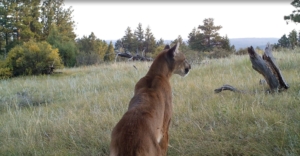
 The news on Thursday September 13th that Judge Dana Christiansen has given grizzly bears another two weeks reprieve from being hunted as trophies in Idaho and Wyoming, comes as a huge relief to grizzly bear license holder and Cougar Fund co-founder, Thomas D. Mangelsen. This shouldn’t surprise you as Tom has spent a lifetime chronicling the lives of wildlife and sharing intimate photographic records of their beauty, their behavior, and their contribution to the environment. Tom’s art has been to reveal nature’s art to a wider audience through the lens of his camera. His success in being randomly drawn for a Wyoming grizzly bear license, that he only intends to use to photograph, has inspired support for grizzly bears through publicity from as near as
The news on Thursday September 13th that Judge Dana Christiansen has given grizzly bears another two weeks reprieve from being hunted as trophies in Idaho and Wyoming, comes as a huge relief to grizzly bear license holder and Cougar Fund co-founder, Thomas D. Mangelsen. This shouldn’t surprise you as Tom has spent a lifetime chronicling the lives of wildlife and sharing intimate photographic records of their beauty, their behavior, and their contribution to the environment. Tom’s art has been to reveal nature’s art to a wider audience through the lens of his camera. His success in being randomly drawn for a Wyoming grizzly bear license, that he only intends to use to photograph, has inspired support for grizzly bears through publicity from as near as